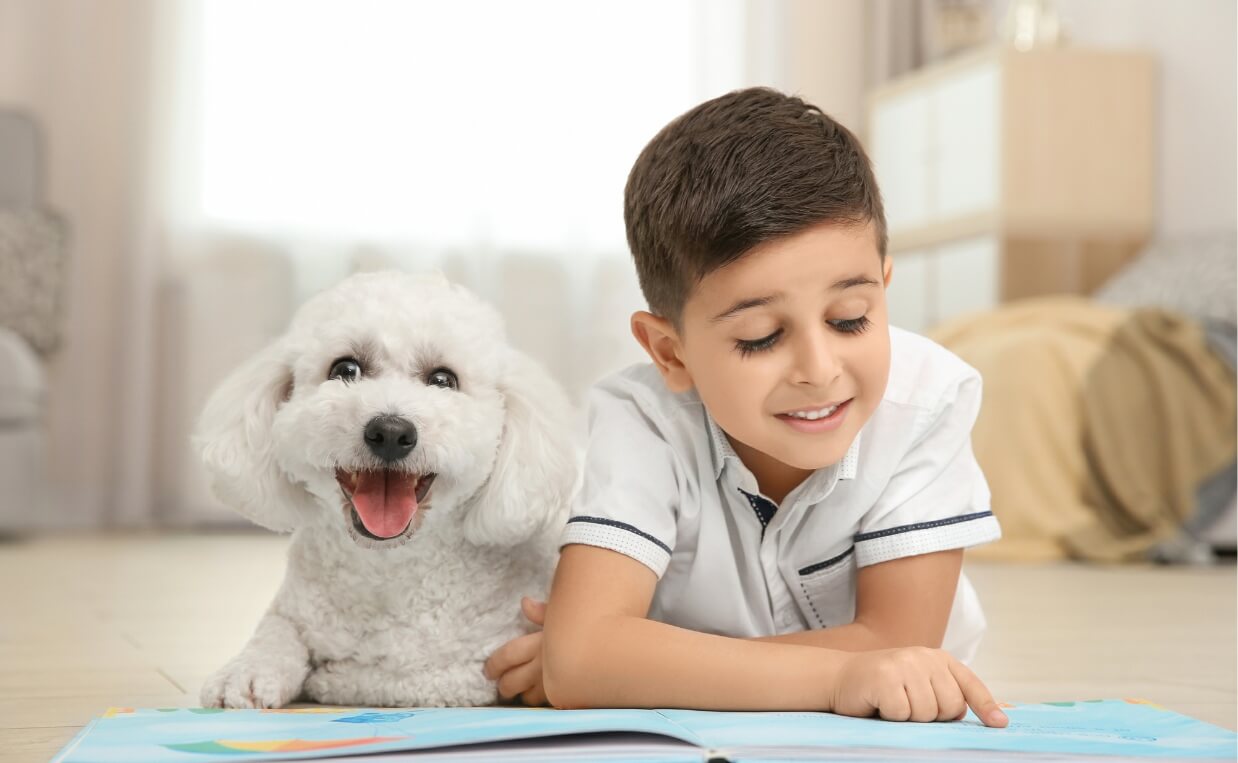
Reading is an essential skill for every child today. But learning how to read isn’t easy for all kids. Once a child has learned the basics, they still need to practice and learn to enjoy readying. Reading to dogs is one way to help kids learn to read.
Reading to dogs, it turns out, is easier for many children than reading to grown-ups. Many children experience anxiety and frustration when asked to read aloud, but miraculously, those worries disappear when invited to read to a patient, loving canine. Children are more at ease and confident when a furry friend is snuggled up next to them.
What is a Reading Therapy Dog Program?
Reading therapy dog programs have been in existence for many years, usually occurring in libraries or elementary schools. Certified therapy dogs sit with the child while their young companion reads to them. The concept is gaining popularity due to the success of these types of programs. Kids with reading issues gain confidence and improve their skills, with reading scores improving over time.
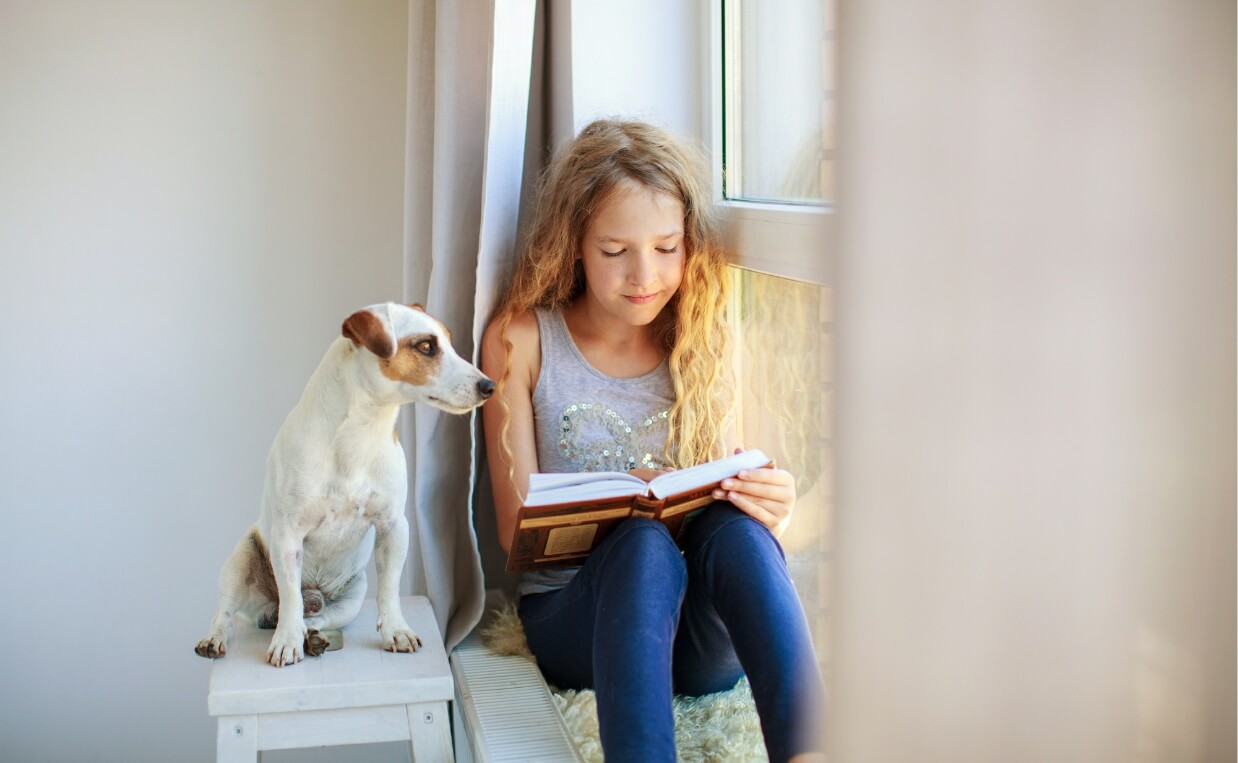
Who Oversees Reading Therapy Dog Programs?
Here in the Pike’s Peak Region the Pike’s Peak Library System offers a Paws to Read Program. Although the Paws to Read Program is temporarily cancelled due to COVID-19, the library expects the Paws to Read Program to resume at some point in the future.
What Does It Take to Be a Reading Therapy Dog?
In most areas, dogs must go through a certification process to evaluate their:
- Temperament
- Health
- Basic obedience skills
- Other factors needed to work with people.
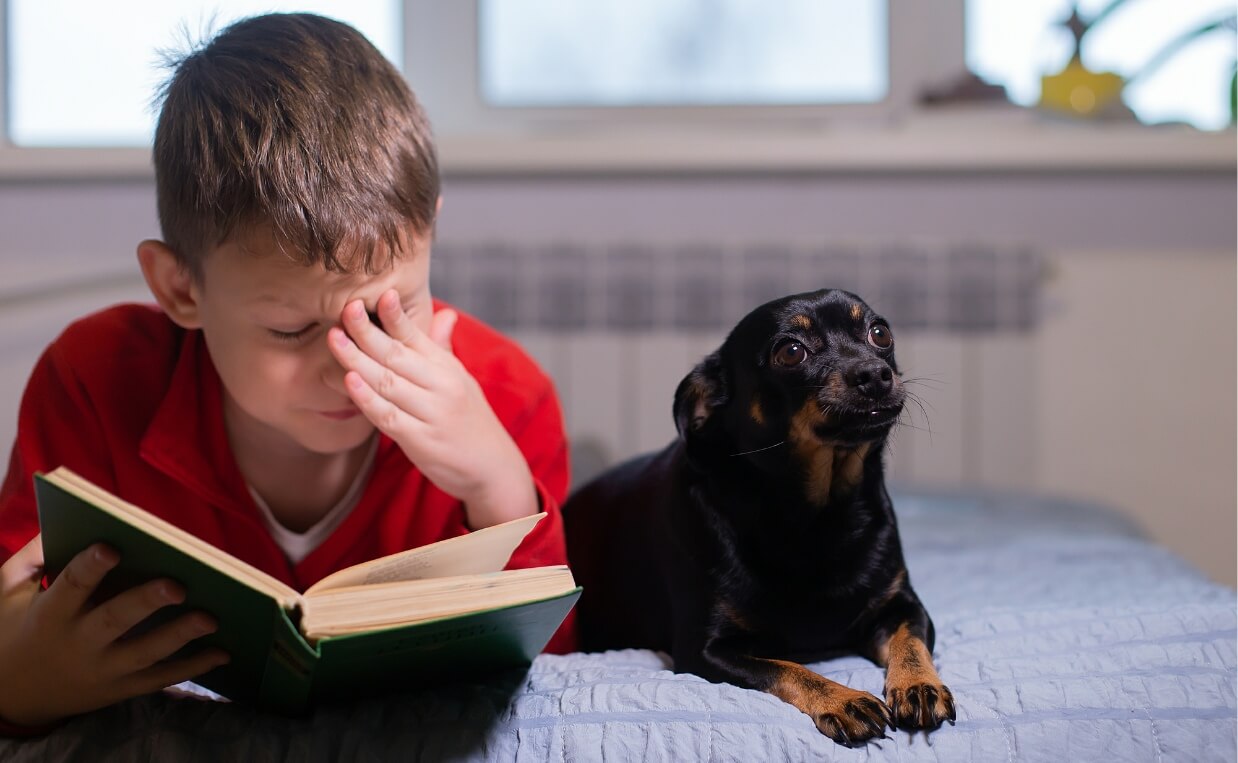
Once a dog is certified, he or she will receive a distinctive neck scarf or vest to wear, and the dog’s owner will be issued official paperwork and identification verifying certification.
Reading therapy dogs often provide therapy in a variety of settings, such as senior care homes, university campuses (during exams to help reduce the stress and anxiety levels of test takers) and working with people with varying disabilities.
A Typical Day in the Life of a Reading Therapy Dog
Reading therapy dogs usually start their day with a grooming session and sometimes a bath. Once the dog is groomed and “dressed” in their special scarf or vest, they’re ready for the day’s assignment.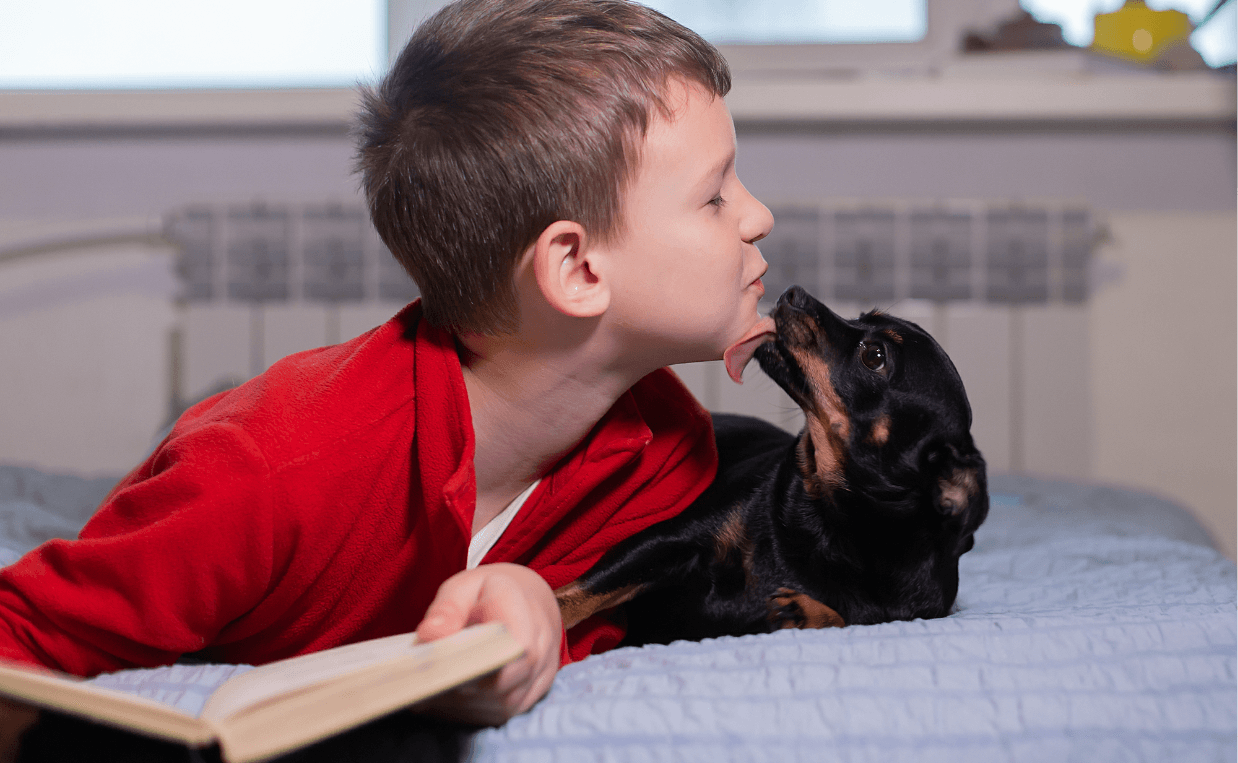
After arriving at the school or library, the dog is situated on a blanket. Each reading session is about 10 or 15 minutes long, during which time the dog must lie quietly and listen.
Normally, dogs read with about five or six children per day. Since the same kids and dogs are paired each week, familiarity, bonding and comfort are developed over time, facilitating increasing confidence and comprehension in the young readers. The children are encouraged to engage with the therapy dog by petting them, scratching their ears and giving a treat at the end of each reading session.
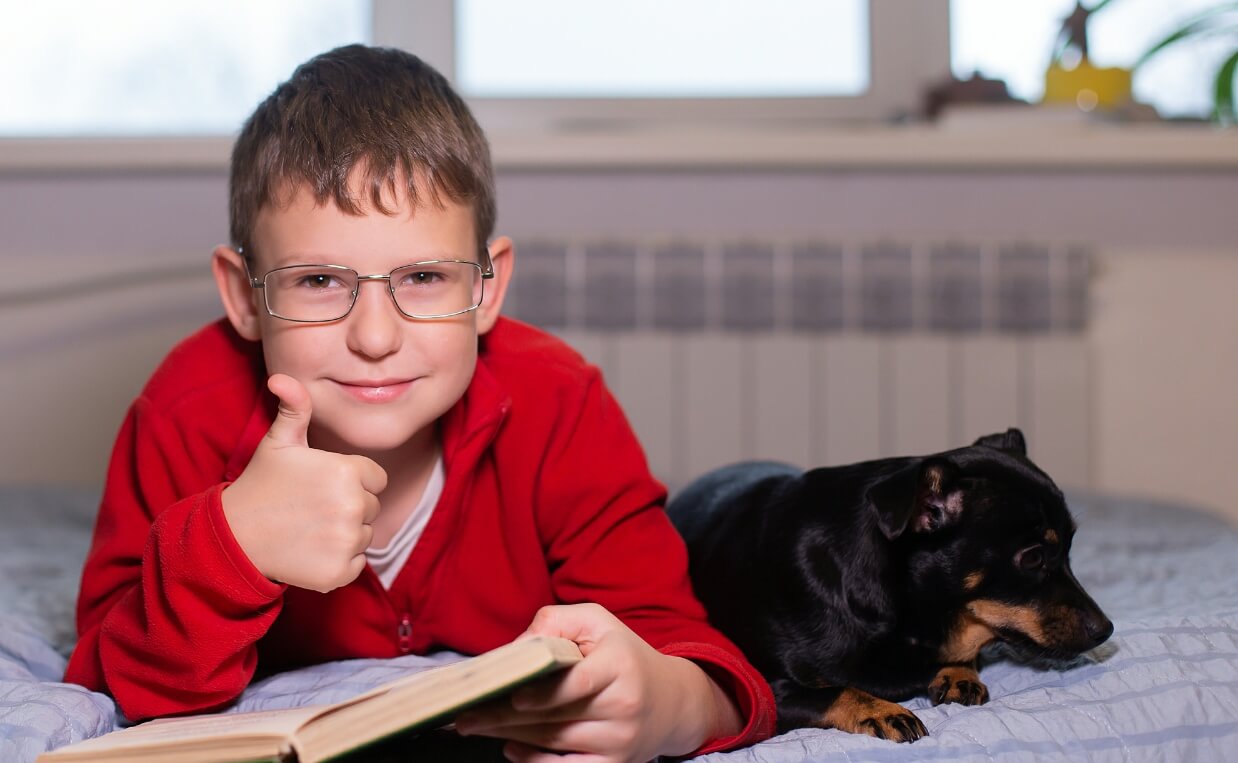
Learning to read isn’t always easy, especially for young children. When the dog reading buddy can’t help, the handlers are trained to help children while they read to the dog. If they struggle with certain phrases or words, the handlers can give the children the help they need so they can improve.
Most owners say the dogs are pretty tired by the end of the visit. Staying in a down or sit position for an extended time can be tiring. However, the dogs love the attention they receive from their students.
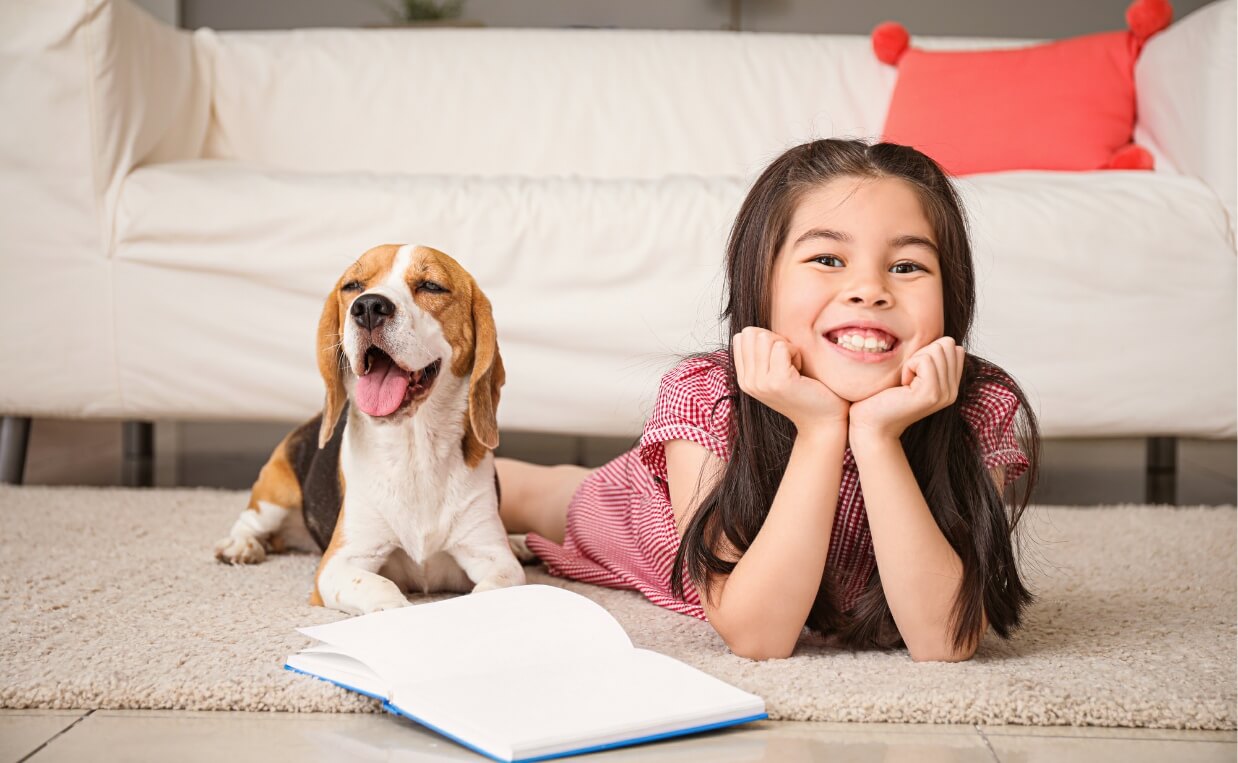
Virtual Reading Programs During the COVID-19 Pandemic
Social distancing and stay-at-home orders across the country during the COVID-19 pandemic has put a damper on reading dog therapy programs. However, some schools and libraries have switched to virtual Zoom sessions. Hundreds of kids enjoy seeing the “reading dogs” online, giving them something to look forward to, something different in their daily routine.
Kids pick a favorite book and are paired with a dog during a breakout session. Some kids even turn their books around to show the dogs the illustrations. Parents say the program is helpful not just because of the dog’s attention. There’s a caring adult with the dog who is eager to listen to the child, and that feels good to the child. Kids tend to take the assignment of reading to a therapy dog very seriously.
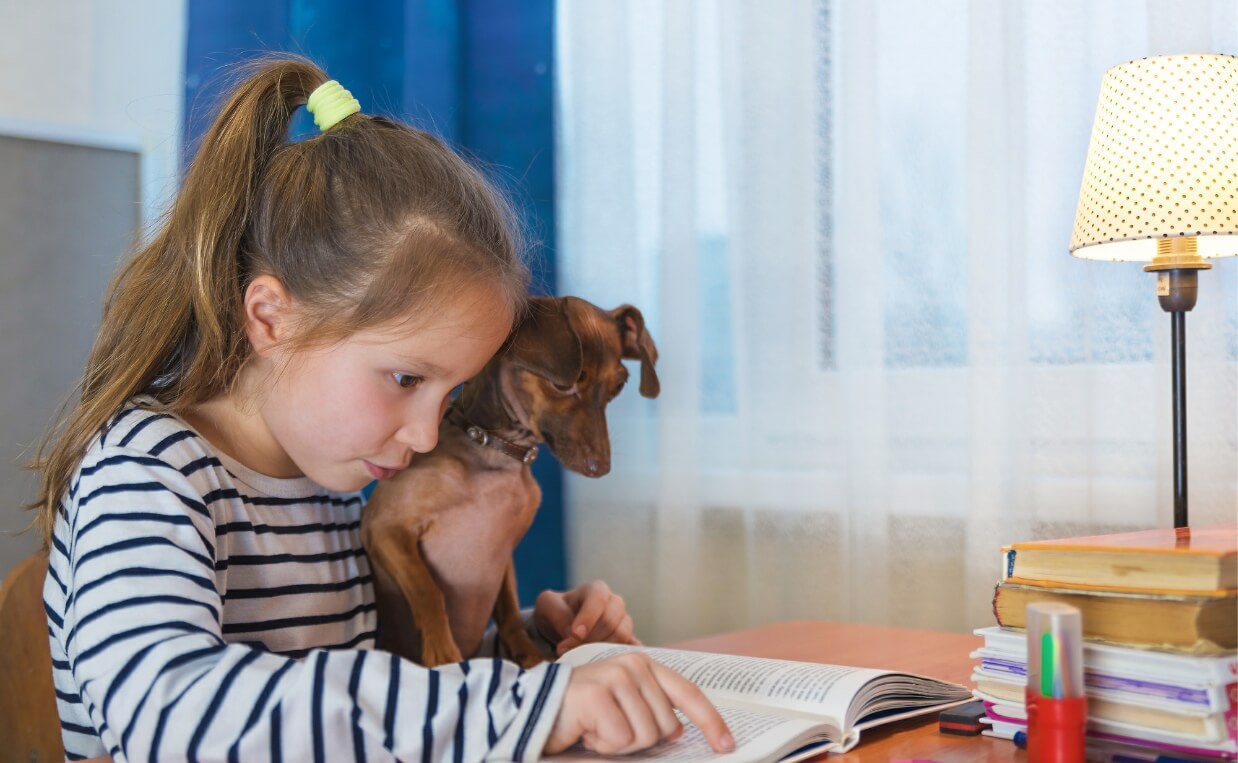 Benefits of Canine Reading Therapy Programs
Benefits of Canine Reading Therapy Programs
Research shows early learners who read regularly to dogs experience:
- Reduced stress
- Improved reading skills (by 12 – 50 percent)
- Higher confidence
- Increased involvement in other school activities
- Decreased absenteeism
- More compassion toward others
- More motivation to read (even without a dog)
- Elevated positive mood
Reading therapy dog programs are beneficial to children beyond receiving practice reading. Children who grow up with dogs receive many advantages over those who don’t have any pets, but it isn’t always practical for some families to adopt a dog. Reading therapy dog programs give kids the opportunity to be around safe dogs even if they don’t have one at home. Interacting with dogs teaches children valuable lessons, including reducing stress. Reading dog programs help children feel less anxious and improve their mental well-being.
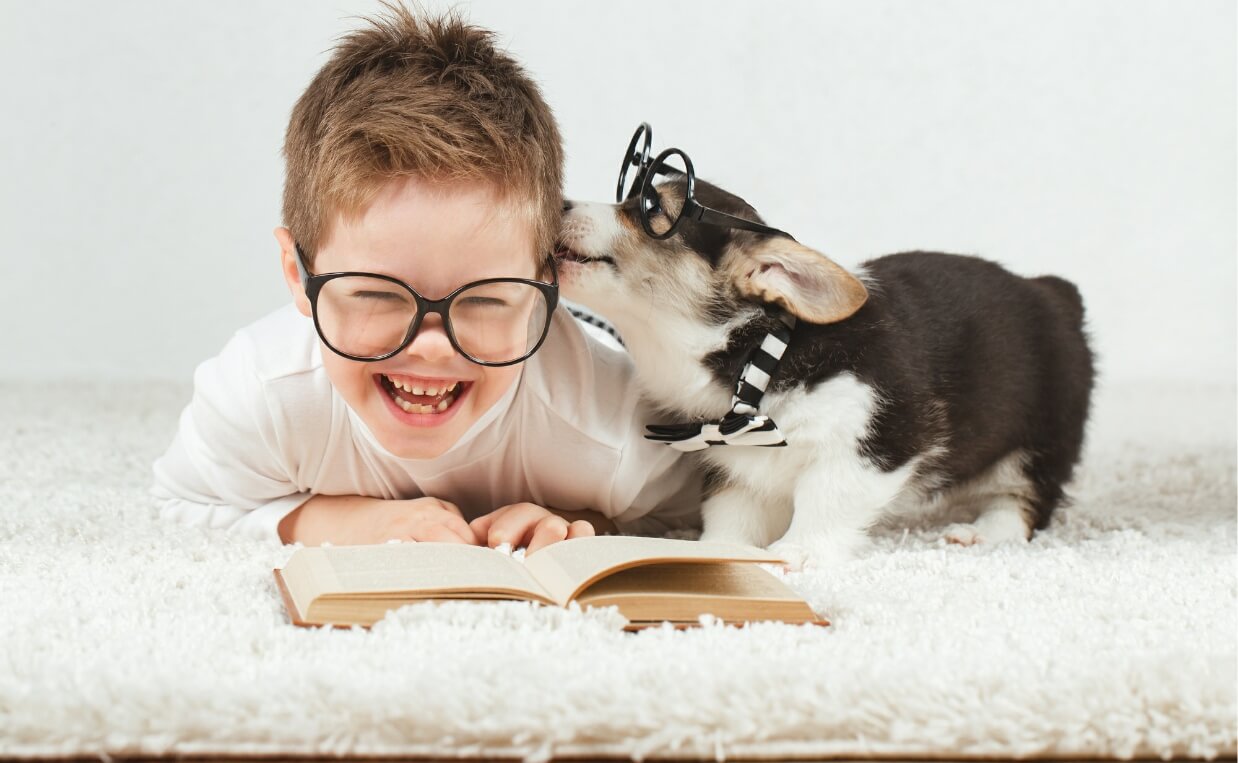
Have you and your dog participated in a Reading Therapy Dog Program? Please share your experience with the rest of the Canine Campus community by commenting below.

 Why Kids Who Have Dogs Are Happier
Why Kids Who Have Dogs Are Happier 8 Ways to Make Your Dog’s Life Happier
8 Ways to Make Your Dog’s Life Happier Tips to Avoid Dog Boredom
Tips to Avoid Dog Boredom 24 Fun Ways to Spoil Your Dog
24 Fun Ways to Spoil Your Dog 15 Common Mistakes Dog Owners Make (and May Regret Later)
15 Common Mistakes Dog Owners Make (and May Regret Later)






Leave a Reply